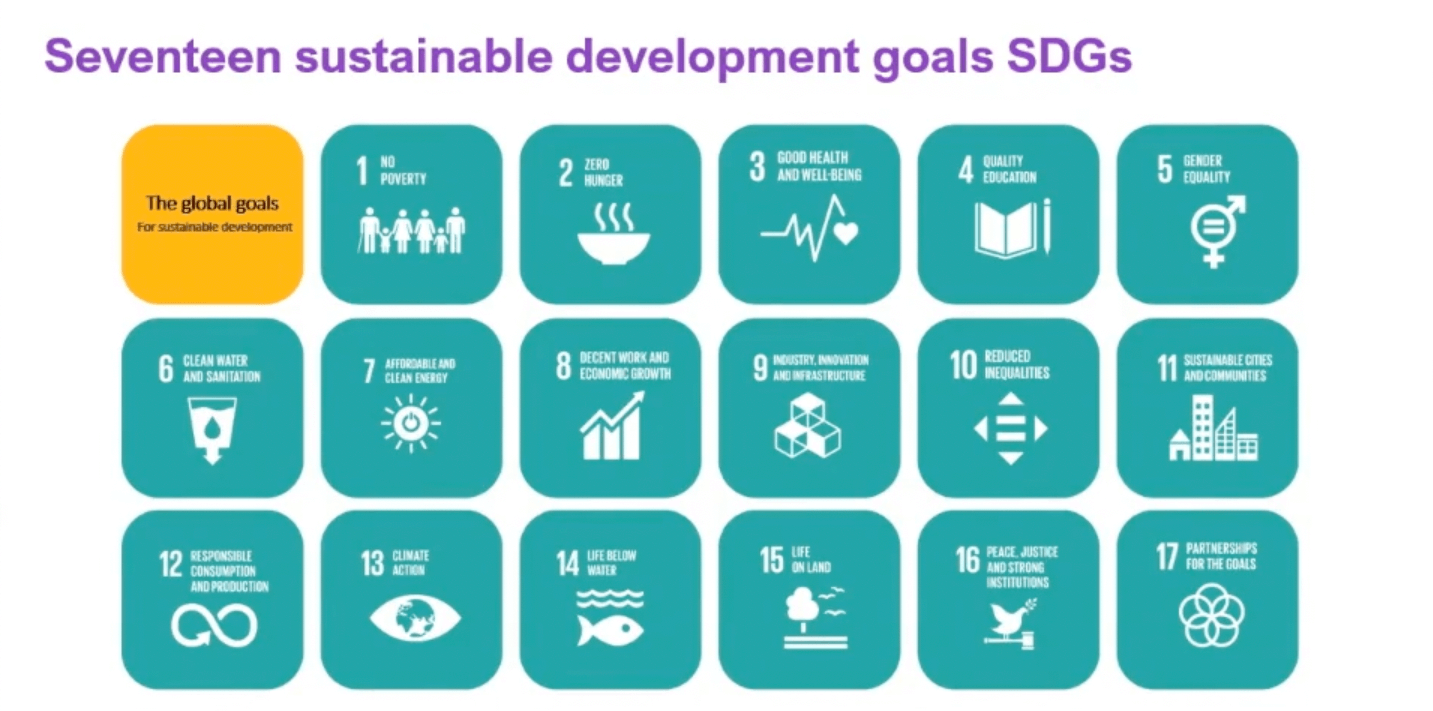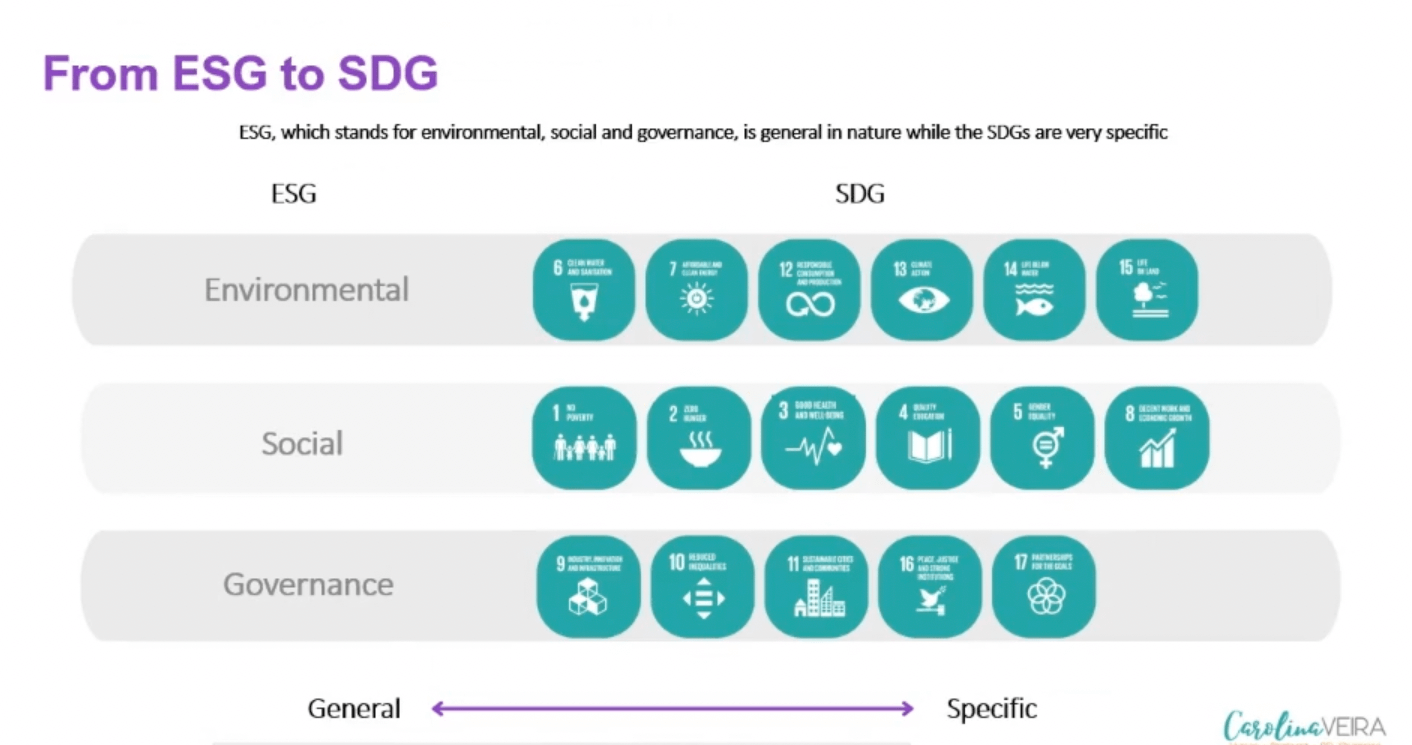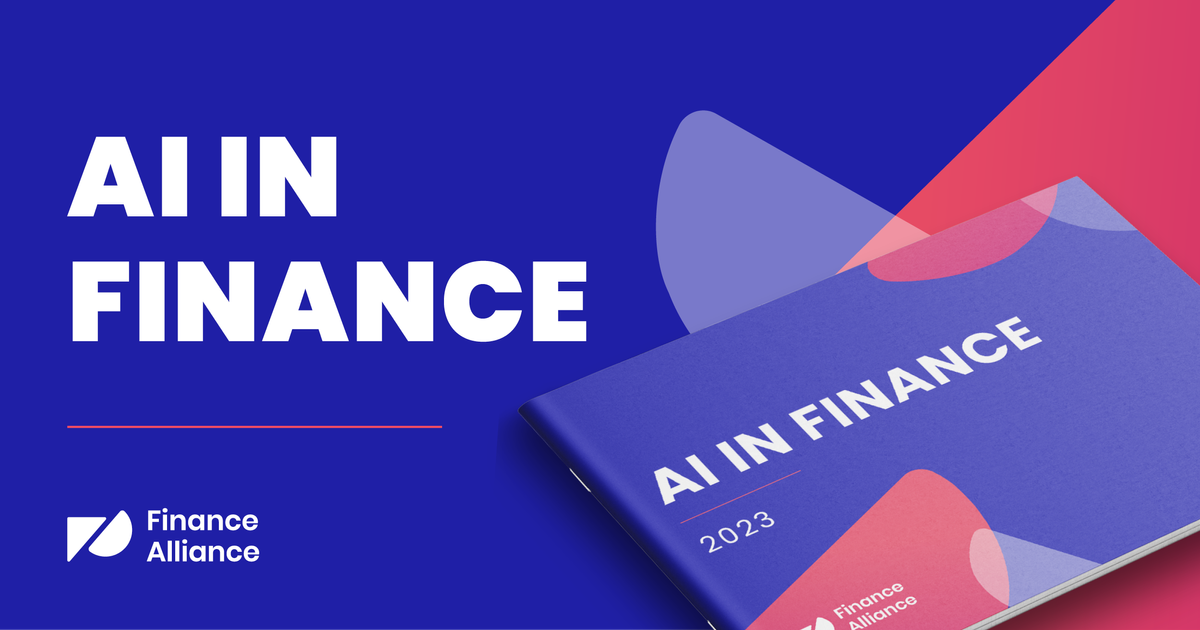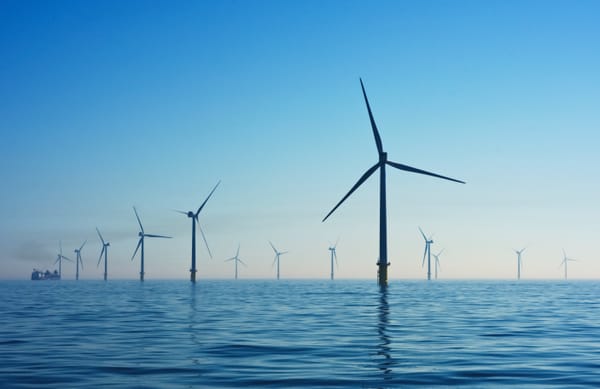Carolina Veira, former Director at Caremax, gave this presentation at the FP&A Summit in November 2022.
I currently lead corporate partnerships, community partnerships, ESG, and diversity, equity, and inclusion at Caremax. We have a healthcare platform and manage patients' data technologically, but we also have medical centers as well.
In this article, I’ll be sharing my experience with ESG and sustainability practices.
- What is sustainability?
- Why is sustainability so important?
- Just how wasteful are we?
- The triple bottom line (TBL) framework
- Connecting sustainable development goals (SDGs) to ESG
- How the financial statements of a company inform the impact change
- Implementing global sustainability projects
- The key advantages of embracing sustainability
- Examples of sustainable companies
What is sustainability?
There's a lot of talk about sustainability and how it impacts our businesses. But what exactly is it?
According to the United Nations:
“Sustainability meets the needs of the present without compromising the ability of future generations to meet their own needs.”
For everything that we do, from operations to the supply chain, to finance, to marketing, how can we make sure that our decisions today don’t have a huge or moderate impact on the decisions that future generations are going to be making, and on the world that they're going to be living in?
That's why it's about avoiding the depletion of our natural resources to maintain a balanced ecosystem and preserve natural capital because as we know, our natural resources and capital are limited. So that's why we talk about ESG.
ESG is a component of three main items: environment, society, and economy.
- Environment is the air we breathe, the soil we use, and the energy we consume.
- Society is the interactions between individuals and groups. The things that we do are meant to be for the people that we serve.
- On the economic or financial side of things, we’re here to add value but also to make a profit.
Why is sustainability so important?
We need natural resources and we need our planet to stay healthy. We only have one planet, and that's why there’s a strong focus on making sure that all those natural resources stay there for longer than 100 or 200 years.
We want to continue breathing quality air and ensure that the food that’s produced is healthy. We want to connect the quality of the environment to our economic growth, and also to healthcare. Remember, we need everyone to stay healthy to continue producing, evolving, and advancing.
Our communities, customers, and producers need healthy environments. So that's why there's such a strong focus on environment and economic growth; we know we depend on the quality of that environment to contribute to the efficient utilization of resources.
The 4 key global sustainability concerns
Global sustainability concerns that we currently face are:
- Climate change
- Water shortage
- Air pollution
- Plastic pollution
Climate change
For climate change, there's a strong focus on the economic losses from disasters. In Florida, we have a hurricane season, and that has an impact not only on the way that we operate but also because we have to prepare every year for what's coming.
That impacts the reduction of operational hours and the service that we're going to provide, the days that we're going to stay open, and how we’re going to keep our employees, staff, and patients safe.
All of that relates to climate change.
One might think, Oh, it's a hurricane? How is that going to impact my daily life? Well, it does. Because now as an organization, we aren’t only concerned about what's happening with our staff and our customers, but we also have to worry about what's happening with our communities. If the power plants or the city can’t provide energy, that also has an impact on us and our patients.
So what do we need to do? Do we hire or rent smaller plants to provide energy? Do we need to let team members connect from a different location? What if something happens to them? In our case, we’ve previously needed to provide additional resources to team members who lost their homes.
So that’s why climate change shouldn't only be a concern of the government, it should be a concern for corporations because it impacts our daily operations.
Water shortage
Water shortage is happening a lot as well, and it’s also tied to climate change. Most areas won’t meet demand by 2050, which means that those areas will have no water. That's one of the main elements we need to survive, so that represents a big problem.
And what are we going to do about all the flooding? Insurance is impacted by it so the insurance companies charge more to operate. So we have to think about those concerns, but also what's happening with the buildings or locations where we operate. All of that has an impact on our revenue and the way we do business, as well as our vendors’ operations. It's all interconnected.
Air pollution
Air pollution affects the quality of air, and that has an impact on our health, the health of our patients, and also the health of our customers.
What are we doing in our operations that are impacting climate change? That also has a lot to do with the governments and the laws they're going to implement, and how our operations are going to be impacted, not only at local and national levels but also globally.
Whatever decisions are made in the EU, they trickle down to America, because eventually what's adopted in the EU comes and happens here. It's a slow process, but it affects the way that we operate here.
Plastic pollution
Air pollution is one of the biggest ticket items as well as plastic pollution. By 2050, we expect that there’ll be more plastics than fish in our oceans.
So the global impact and the impacts of climate change are some of our biggest concerns as we continue to evolve and grow.
I'm very passionate about the environment for many reasons, but I do want to leave a good, healthy planet for future generations. Those future generations could be your children or your nephews or nieces, so we all need to live healthy lives to continue our legacy.

Just how wasteful are we?
- The amount of food that’s wasted in the value chain is 31%.
- 60-70% is the percentage of the original value of PET, cardboard paper that’s lost after the first use of recycled products.
- 92% of the time we don't use our cars.
We're a pretty wasteful society in general. We've been trained that way. But for me, it's important to highlight these numbers so we start thinking about ways we can contribute to becoming less wasteful.
We can’t solve all the problems in the world, but we can take little steps toward becoming more environmentally friendly.
We could commute with somebody or use public transportation. We could also transition from cars that use gas to electric cars or hybrids. That step is much better than just consuming gas, and especially with the economic and political situation globally, it's a better option for us.
The triple bottom line (TBL) framework
The TBL framework includes people, planet, and profit, and it goes beyond the traditional measurement of just profit and return on investment. It makes us think about how our decisions and our operational performance are impacting positively or negatively on people, our planet, while in the meantime, making a profit.
You can measure people through:
- Quality of life
- Unemployment rate
- Gender equality
- Income
Examples of environmental measures include:
- Air and water quality
- Energy consumption
- Land use
Profit is calculated through economic and financial measures such as:
- Cash flow
- Return on investment
- All the KPIs that you use in your daily operations
So how do we connect those three Ps to ESG?
- For environmental we talk about climate change, resource depletion, waste, and pollution.
- For social we talk about human rights, modern slavery, child labor, working conditions, and employee relations.
- For governance, it’s about executive pay, ethics, board membership, and diversity and inclusion.
Connecting sustainable development goals (SDGs) to ESG
The SDGs are a framework that all the big corporations are currently using.
The United Nations created the framework with the idea of having a healthy planet and upward mobility for the people who live on it.
There are 17 goals. I'm not going to go through them all, but I wanted to make the connection between ESG and the SDGs, and how they all interconnect.

We all need economic growth to continue living the lifestyle that we're used to, but we also need to get better in that lifestyle, to live with purpose, and to live in an environmentally friendly way that's going to alleviate the suffering, pain and struggles that future generations will have to go through.
All of this needs to be interconnected, and that's why I'm very hopeful that we all connect to the SDGs and support at least one or two that speak to us.
To you, that might be climate change, which is SDG 13. Or maybe SDG 17, which is ‘partnerships for the goals.’ This looks at how we connect with other organizations that also believe in the SDGs, and believe in the environment, social initiatives, governance, diversity, equity, and inclusion.
I wanted to give you the big overview and then show you how those connect to ESGs and the people, planet, and profit concept.

- Under environmental, you have SDG, 6, 7, 12, 13, 14, and 15.
- For social it’s 1, 2, 3, 4, 5, and 8.
- Governance is 9, 10 11, 16, and 17
So we go from a very general concept of ESG to a more specific one.

How the financial statements of a company inform the impact change
Financial statements follow that vision or strategy around cost, profit margins, and the bottom line. But the question always is, how do we incorporate sustainability concepts into our financial operations and daily operations as an organization?
We all agree that on the financial side, we're always looking to generate revenue. But increasing revenue is the main task. We want to add value and ensure that we become sustainable, that we're not just around for one or two years, and we're there for the long run, and that ties to revenue.
So how can we ensure that we're introducing those sustainability concepts and adding value without taking away from our bottom line and cash flows?
Sustainability can impact the bottom line and add value just by being thoughtful in the way that we operate. So if we're producing something like packaging, how do we make that packaging more sustainable? How do we recycle items into that packaging so it has a lesser impact on the environment, while also making sure that it ties to our numbers?
Instead of increasing the cost of something, how do we make sure that we decrease it or make it more efficient? I believe that sustainability practices have that impact.
Implementing global sustainability projects
We can think about using solar energy, wind energy, water efficiency fixtures, and green spaces, and how we can bring all those resources into our operations. Some of you may have manufacturing organizations that can use solar energy instead of regular electricity. We can also buy credits for renewable energy.
The good thing about it is that we know how much it's going to cost, so it gives us a good idea of the cost of energy for the next five years, for example. So that's a cost that we can manage. It's also good for the environment, and that's part of the sustainability strategy that you incorporate into your day-to-day operations.
The key advantages of embracing sustainability
One of the most important advantages of embracing sustainability is the positive impact that we're going to have, not just on the planet but also on our people.
If the planet is healthy then most likely general society will be healthy. And that's good for us because there are fewer expenses on healthcare. We have a healthier population, and therefore we have healthier team members committed to being part of our organizations because they know that we embrace that sustainability strategy.
But as a corporation, we also meet public expectations, we take care of our reputation, and we also get good press. Organizations are always interested in ideas or opportunities for good press.
We can also think about employee retention. Even when you're looking for new talent, employees are going to be looking for organizations that are going to help them become better citizens and that align with their values. The new generations are especially very concerned about the environment.
If you know that that's part of your business strategy as an organization, the team members or future team members are going to be more inclined to give you a chance as their employer because that's one of their biggest concerns.
You also get rewarded for good behavior as an organization because now you’re doing what's right for all of us as a global community.
Let's not forget that there are many regulations that are being created or developed around ESG. There are lots of laws being created in the EU currently that are probably not set in stone. They're looking for big corporations to give them feedback and more of a partnership between what they think is needed versus what the corporations think is needed.
So there will come a time where everything’s going to be aligned and we’re going to have to comply with those regulations, not only because it's the right thing, but also because there's going to be penalties and financial consequences if we don't follow those laws. So it's good to start embracing sustainability practices now if you haven't done so already.
Ensuring that we're following what the government is asking from us is not only going to impact us financially, but also by using ESG as part of our strategy, we're able to attract other investors to raise capital. Also, there are financial institutions that are now lending money based partially on your ESG scores.
If we can start implementing sustainability concepts into the way that we operate daily, that’ll also help eventually with what's coming. We're always looking to raise capital or looking at institutions to borrow money from. So we have to be proactive around it, and we have an opportunity to do so.

Examples of sustainable companies
Nike
Nike started introducing sustainability practices in 1979, and they're always using technology to improve their products. But now they're even using technology to improve the soles of their shoes.
They’re using recycled materials to produce their shoes. All soles since 2008 have been composed of 50% recycled manufacturer waste.
I see spending money as a way of investing money. I know it's going to be an expense, but I like to think that I can do more with the money that I'm going to spend. Instead of just becoming a decrease in my revenue and my income, it's more about, “When I'm buying something, am I being thoughtful about who I'm buying it from?”
So if I have to buy shoes, I’ll buy them from Nike because I know that in their operations, they're already thinking about incorporating recycled items to produce their shoes. They have a program where you can bring in your old shoes and get a discount on new shoes that are made with recycled materials.
Nike Air’s innovation facilities divert more than 95% of manufacturing waste from landfills. It's great work and you're getting great shoes. Not to mention that they do phenomenal work in advancing social justice and diversity, equity, and inclusion practices. So this is a good example of a great company doing great things.
IKEA
I know you're very familiar with IKEA. For their furniture, they use materials such as cotton, better plastics, and bamboo. They create affordable furniture and energy-saving appliances.
Remember, it's not about having to develop or design something with recycled materials or 100% of the product has to be based on recycled materials. That's not the objective. But if we could be more thoughtful about how we’re producing these items and incorporate recycled materials into the products or packaging of the products, that's the solution. And that's what companies like IKEA and Nike are doing.
IKEA is reducing food waste by packing lunches, keeping vegetables fresh for longer, and using UTZ-certified teas and coffee.
It's not only about producing a product, it's also about who your providers and vendors are. Are you sourcing from women-owned businesses? Are you sourcing from solopreneurs? Are you going to people who can connect you to smaller businesses around your local communities?




 Follow us on LinkedIn
Follow us on LinkedIn




